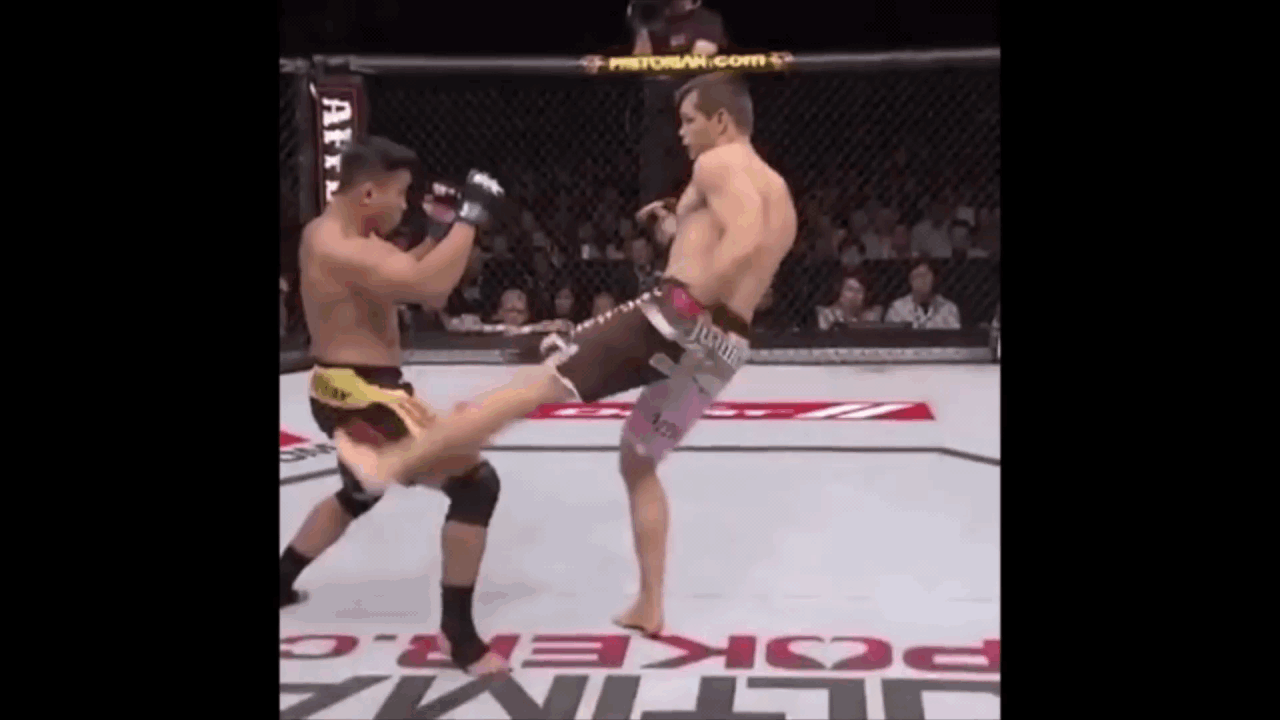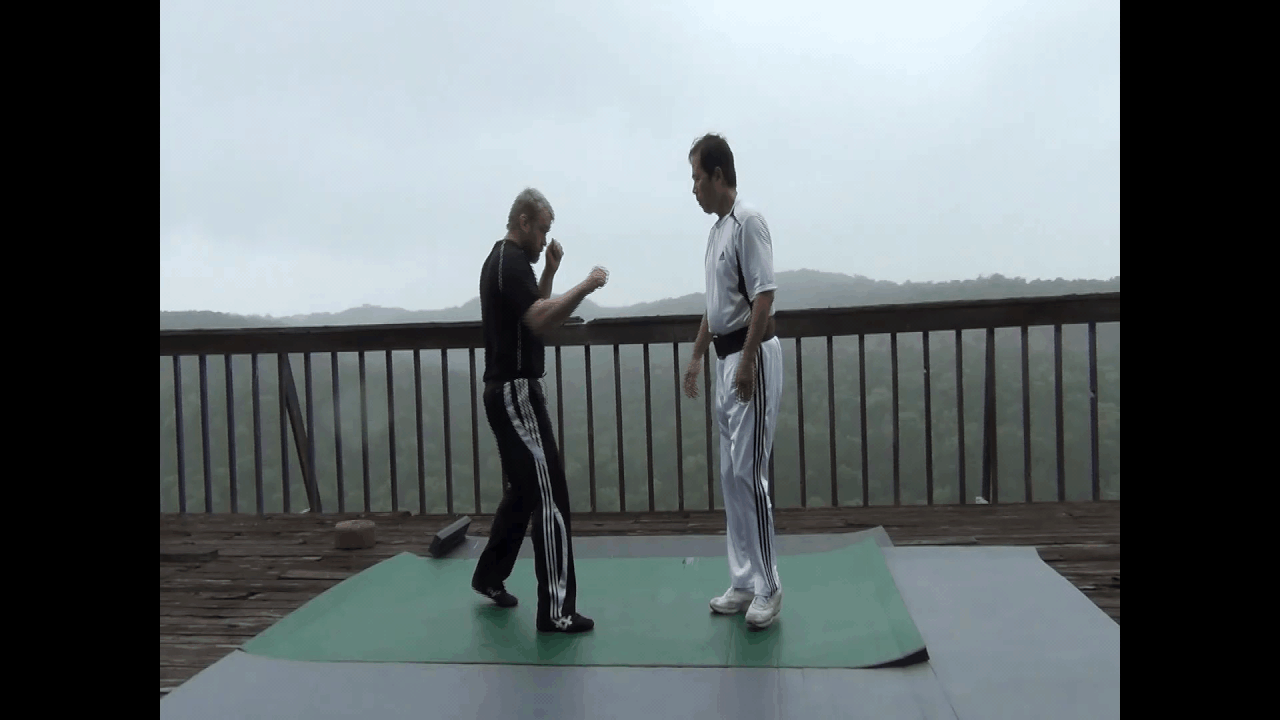Cung Le didn't throw a punch into a "fake opening". He made that opening by making his opponent fall upon emptiness. Not sure what you are looking at. But here's what I'm seeing.
Cung Le's opponent reaches to pull or control Cung Le's guard after kicking. At this point the opponent is covered.
Cung Le see the attempted grab and removes it in a way that lets him counter as a hook.
Cung Le's opponent misses the guard because Cung Le moved it. As a result the attempted grab by the opponent was over extended.
Cung Le took advantage of the over extension, over extending created the opening, which was a real opening and not a fake opening.
The term "fake opening" describes when someone looks like they are open but really aren't, they aren't real opening. Instead they are lures used to trick you into attacking a certain area so that your attack can be countered. Long Fist techniques create such opening, where you think you can get in but in reality it's not a real opening that can be exploited.
I don't know these people, nor did I see any more of this fight than is in the gif. I was trusting that
@Kung Fu Wang made an accurate assessment that the person on the right is throwing a punch, and then left the opening. That was my mistake.
However, the same applies: He turns his head, he overswings, and his other hand is down. All of that is still true.
You can't take advantage of a fake opening because it's not a real opening. The only thing you can do is avoid it. So if you think you can attack a fake opening then you have already fallen for the lure. Even professional fighters avoid fake openings when they see one. If you see a fake opening then you avoid it or attack somewhere else.
The thing with fake openings is that you aren't "Expecting" you are "luring". You are driving attacks to where you want to be attacked. When you "Expect" you are just guessing.where the opponent will hit, which is not a good strategy. Using fake openings are like fishing. You can cast your line and just let your bait sit there and expect that something will swim by and bite. Or you can cast your line and lure the fish by attracting attention to something that looks like food but actually hides the hooks.
Is luring 100% of course not, but the reliability of it is a very high percentage which is why you see evidence of it in almost every type of competition even non fighting ones.
Um...you're changing the word, but the effect is the same. You're "luring" a hit to come where you left the opening, or you're "expecting" a hit to come where you left the opening. That attack you're "luring" might not come from where you're watching, or it might not hit the space you leave open. If your opponent takes the time to notice the opening and
doesn't punish you, then they aren't experienced enough you need to leave that opening in the first place.
Long fist techniques don't work like this. The techniques present "fake openings" and because of that it's not a gamble. Any real opening is covered up by using another technique .
This is an example of covering up an opening that actually exists. In technique used here, the Long fist technique has an opening at the end of the 2 punches that threw. The system understand this and adds a kick to close that opening. If I do not do the kick then I will have a real opening. If I use the kick then the opening will be closed. You can see that I have a real opening by looking at the my guard. My right guard doesn't even exist at this point.
Except, your head isn't open. Your head is back, out of range. Even if he were to lean in, you're covering your chin with your hand.
Also...and hear my out...you can do the punches in such a way that you're not leaving yourself open! Did you know that when you punch with the left hand, the right hand can stay in the guard position? And when you punch with the right hand, the left hand can return the guard position? And guess what! You can do a kick as a follow-up in that case, too!
Oh, and because the guard position doubles as a chamber, your strikes will be faster and stronger from there than wildly swinging haymakers. You'll also be better balanced when you go to kick than if your arms are wide, or across your body as they are here.
I think it also helps that your opponent is crossing his arms and leaning into the kick.






